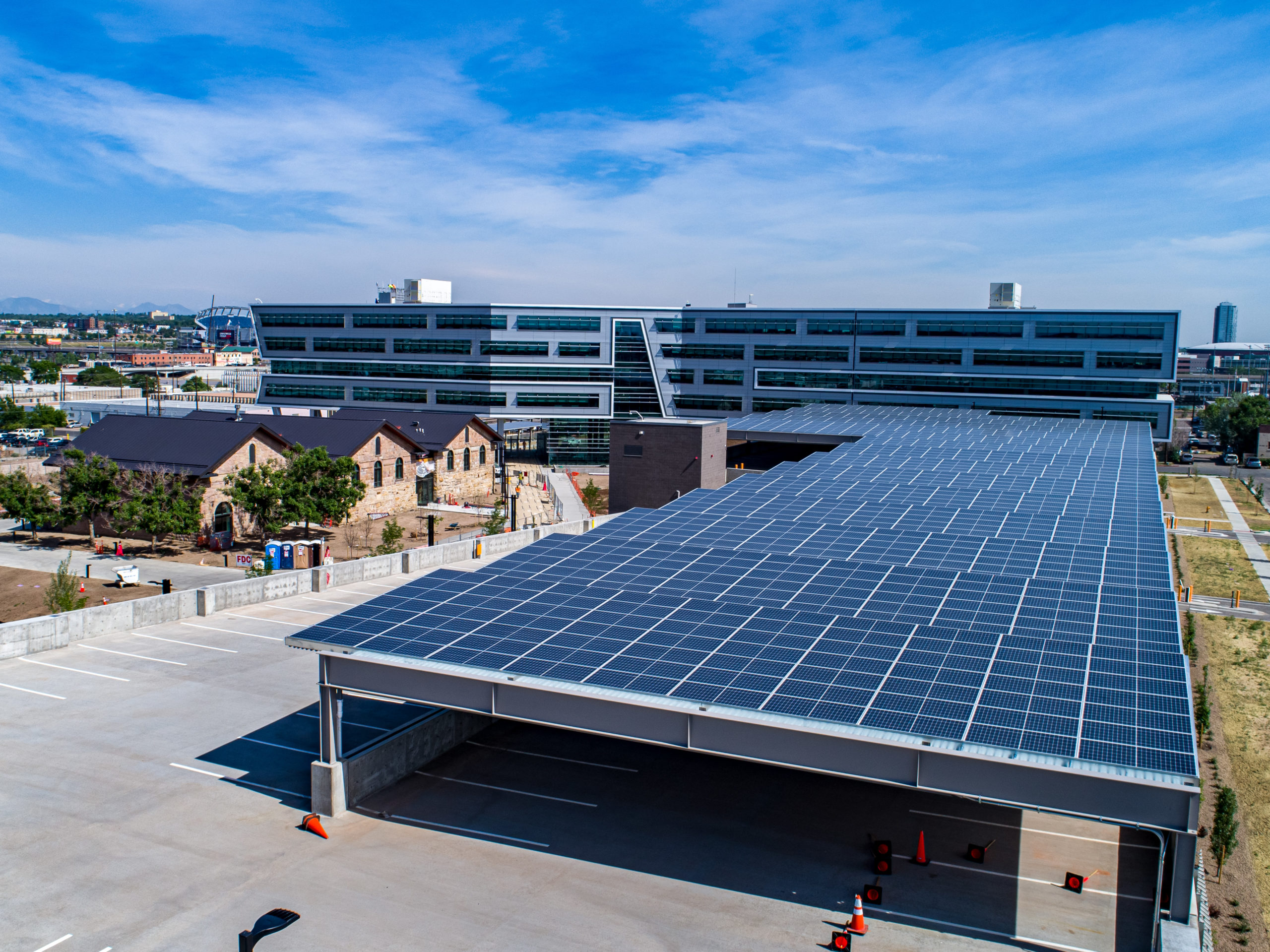
By John Shaw
An increasing number of businesses are boosting cash flow while also differentiating their business. They are investing in solar to capture waning tax benefits, reduce operating expenses (OpEx), and meet environmental, social and governance (ESG) criteria. Navigating the complexities of a solar capital energy improvement can be challenging, so we’ve answered some of the most common questions below.
Are there any incentives to go solar?
- Federal Investment Tax Credit (ITC): Taxable entities with tax burden will recoup 26% of the investment when filing taxes the year after installation. The ITC is scheduled to step down to 22% in 2023 and to a permanent 10% in 2024.
- 100% Bonus Depreciation: The entire asset may be depreciated in the first year. The basis is 87% of contract price in 2021, and the value is a minimum 21% of the investment for a Colorado corporation.
- Xcel Medium Solar Rewards Program: For systems between 25-500 Kilowatts (kW), Xcel Energy pays 3.75¢/kWh of production for 20 years. Technically, they are buying your Renewable Energy Credits (RECs).
- Utility Savings: Every kWh produced by solar reduces what you buy from Xcel Energy, lowering OpEx. There are mechanisms for recouping these benefits from tenants in triple-net leases (NNN).
- Increased property value: Lower OpEx increases net operating income (NOI), and therefore building value.
What is the life expectancy of a solar system?
An expertly engineered and constructed system with equipment from reputable and bankable manufacturers will have a three-decade estimated useful life (EUL). Solar modules themselves have a 25-year performance warranty. Inverters standard warranty is 10 years.
What is the typical payback period for solar?
A typical 200-kW commercial solar system in Xcel Energy’s Colorado territory breaks even in 6-8 years, then provides 22-24 years of pre-paid clean energy.
What can I expect to save, and will solar reduce demand?
A typical 30,000-square-foot roof can accommodate a 200-kW solar system. In year one, this system will reduce utility bills $15K or more, generate about $11K of incentive income, and produce over $185K in tax benefits on a $400K investment. Demand (kW) is a separate charge on the bill, one for which we do not model savings. Solar can reduce measured demand, but because of the way Xcel Energy measures it (the highest single 15-minute average throughout a month), it is not predictable enough to model with certainty. There is, however, a solar rate available which lowers the price of demand.
What is the most common solar system in the Denver market?
- Rooftop systems are the most common and cost-effective type of solar installation in our market.
- Carports are another option for commercial property owners that will protect vehicles from the sun and elements, such as hail. While they are double the cost of a rooftop system (or more), they offer these additional benefits:
o Covered parking can generate revenue.
o Greater visibility for your system.
o Pairs well with installing electric vehicle (EV) charging stations. - Ground-mount systems are roughly 1.5X the cost of a rooftop system and are more efficient systems but are not as common for commercial property owners due to the required land.
- Custom solar solutions like building integrated photovoltaics (PV) and solar awnings are much less common, frequently less efficient, and always more expensive.
How does solar attach to my roof?
Flat rooftop systems are secured to the roof by a hybrid system of ballast blocks in padded aluminum pans and engineered mechanical attachments to account for our winds and the roof’s deadload (structural) capacity.
Will my roof support solar?
Flat roof systems need about 5-6 pounds per square foot (psf) of available deadload capacity, while pitched roofs with flush-mounted solar need about 3 psf. The more deadload capacity a roof has, the fewer mechanical attachments needed.
When is a good time to go solar?
Ideally, your roof will have 20 years of life left. It’s also a good idea to consider other future energy-saving upgrades, such as LED retrofit and higher efficiency HVAC, when sizing solar systems.
How long will it take to put solar on my rooftop?
Depending on system size and array complexity, installation may only take 4-8 weeks. However, engineering, permitting, and equipment procurement lead-times can add six months or more, so the norm from contract to commissioning is 8-12 months.
Does solar make sense if I don’t occupy my building?
Solar is beneficial to both property owners and tenants in gross or NNN leases. There are two methods to overcome the split incentive: Commercial Property Assessed Clean Energy financing (C-PACE) and green leases.
What is maintenance like?
A preventive maintenance visit once per year is needed to maintain the inverter warranty, and an unscheduled maintenance visit about every two years is typical. The most common maintenance needs arise from system outages that occur due to electrical anomalies in the facility or inverters. Solar systems protect themselves from damage by shutting down in such cases and frequently are resolved with minimal troubleshooting and a simple system reset.
John Shaw is co-owner and sr. commercial solar project developer – Namasté Solar. Namasté Solar’s purpose is to transform energy and transform business. The company’s experienced solar advisors will help you understand your project goals, timelines, and milestones. Look at their extensive commercial experience and see how they measure up.









